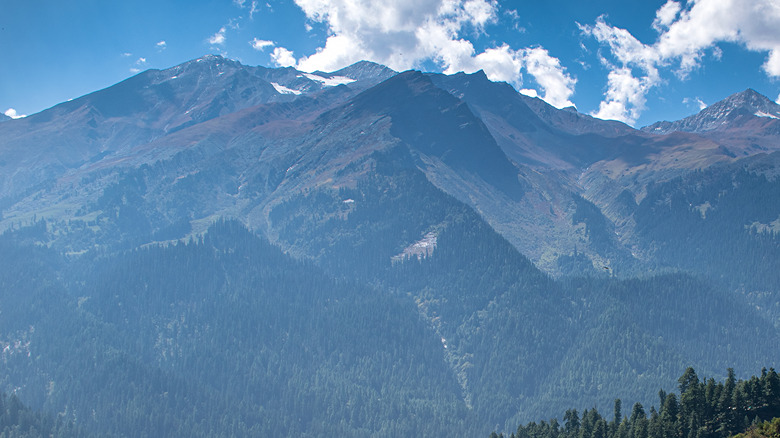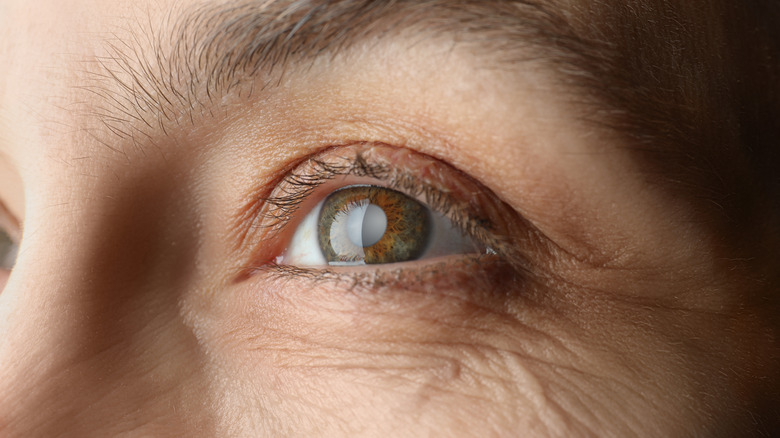Here's Why Mountains Look Blue From Far Away
The spring and summer seasons are the perfect time for hiking and road trips, which are just two great ways to take in some of America's most breathtaking scenery. While out on an expedition of this sort, though, you may have noticed that far-off mountain ranges can sometimes appear blue-tinted, or in the case of the famous old song "America the Beautiful" with the line "purple mountains majesty," somewhat purplish (per Dictionary.com). This visual effect is so common, in fact, that several mountain ranges like the Blue Ridge in the Southeastern U.S. have "blue" right there in their name (via Our State).
The reason that this optical illusion can sometimes occur has nothing to do with the mountains themselves, as anyone who's ever been close to one can attest that they are clearly not blue. What actually causes mountains to look blue way off in the distance has everything instead to do with the nature of light itself, where that light comes from, and how the human eye perceives color, as The Knowledge Burrow notes.
All light comes from the Sun
To understand the blue-tinted mountain phenomena, it's crucial to first understand how light works and where that light comes from: the Sun. Sun rays appear white because they include all the colors in the rainbow, just mixed up, as HowStuffWorks explains. Even though all the light blends into a blinding white light in a sunbeam, each one of those colors travels on its own wavelength, some of which are longer than others.
Once that light hits the Earth's atmosphere, though, and once it interacts with air molecules, those light wavelengths from the sun begin to bounce around — the shorter the wavelength, the more movement it has. This is called Rayleigh scattering. Among the smallest of all light wavelengths are blue and violet, but sunlight has far less violet in it than it does blue. This phenomenon is also partially why the sky itself appears that shade of color, and it also explains why mountains can sometimes look blue at a distance, but it's not the whole story.
Our eyes perceive blue easier than other colors
Taking so-called "Rayleigh scattering" into account, blue lightwaves (and, to a lesser extent, violet, which our eyes are much less able to perceive) bounce around the Earth's atmosphere much more quickly than other colors. Because our eyes pick up on blue, the combination of something large in the distance upon which we can fix our gaze — say, a mountain, but it really could be any large object like a building — and a good amount of lightwave-filled atmosphere between our eyeballs and whatever it is that we're looking at will create a sheen of blue tint over the object.
The closer one gets to the mountain, the less blue light the eye will take in, and therefore the less blue the mountains will look. And conversely, the more distance between you and the object there is, the more blue-tinted the picture we take in will appear, as HowStuffWorks goes on to note.


